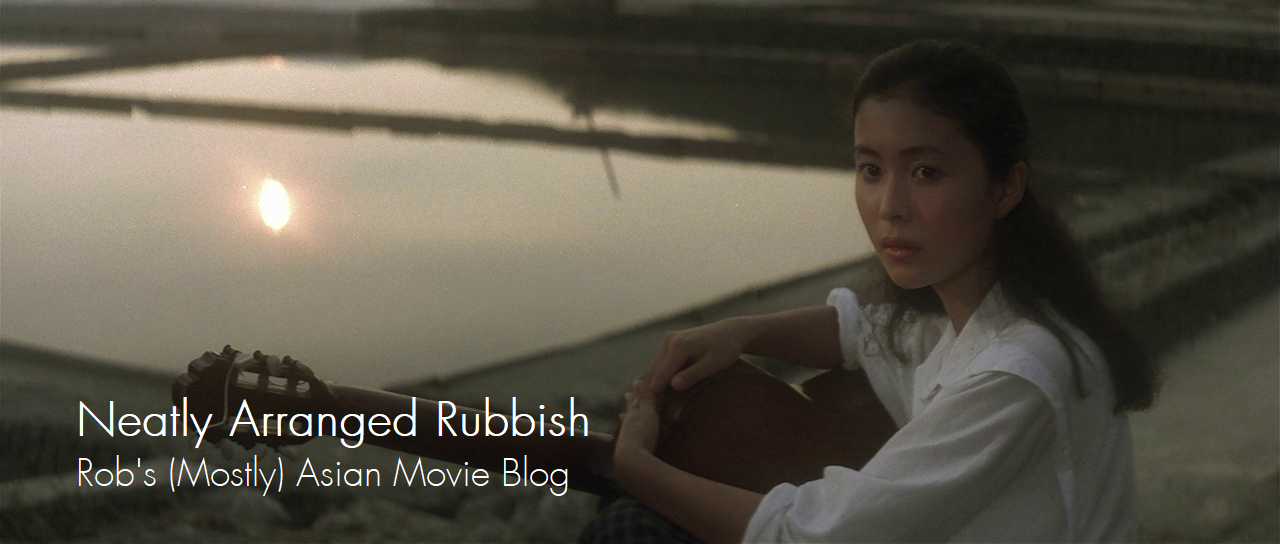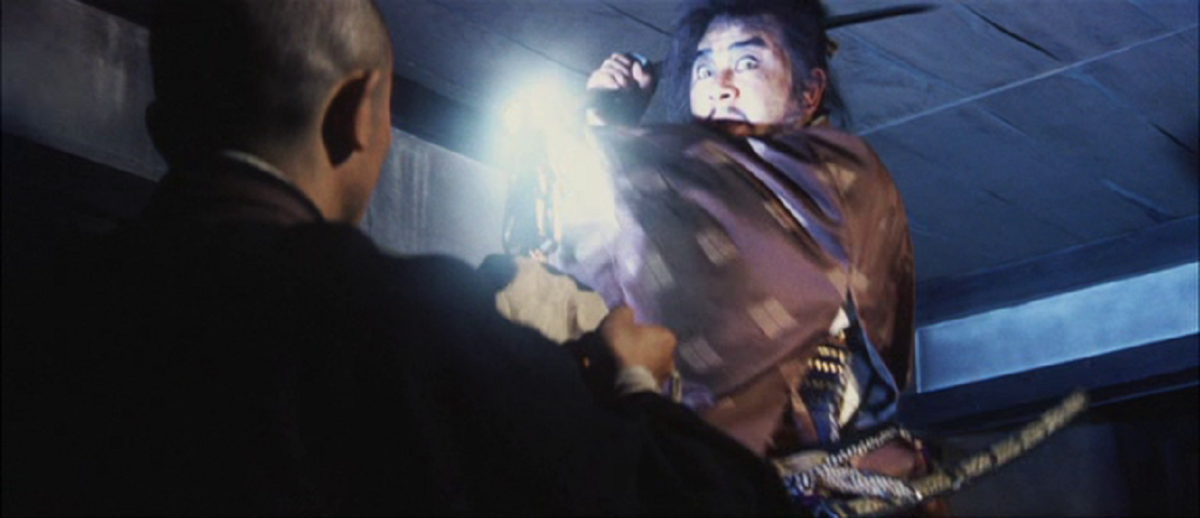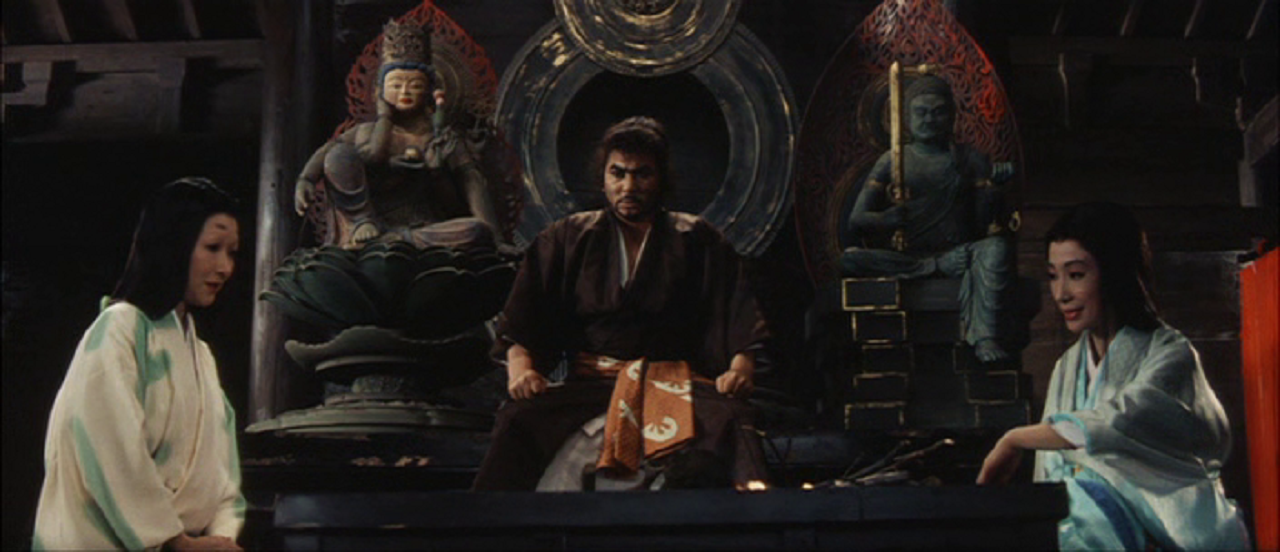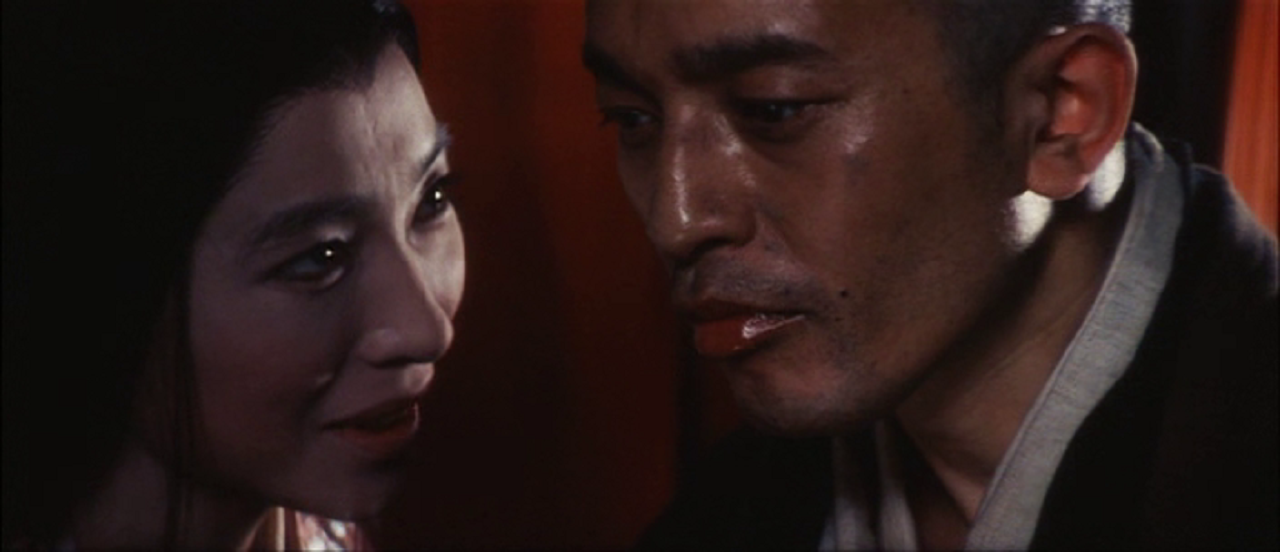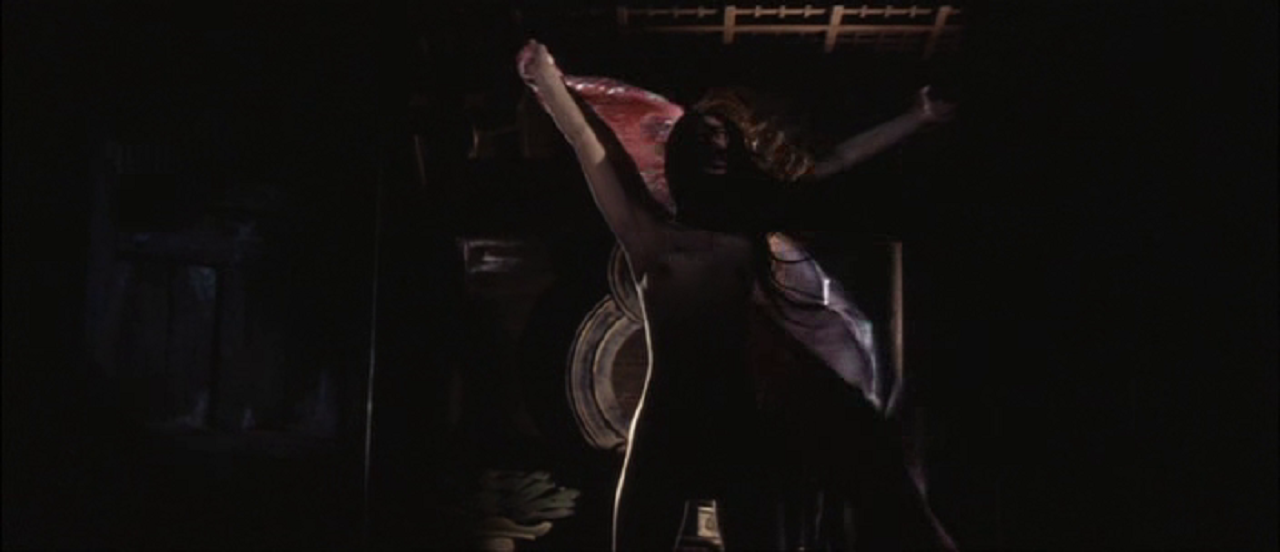Last Updated on September 29, 2020 by rob
In the middle ages nobleman turned bandit Taro (Shintaro Katsu) and his nymphet companion Aizen (Michiyo Aratama) seek refuge in an abandoned Buddhist temple in the mountains. When Taro’s ex-wife Kaede (Hideko Takamine) also arrives and tries unsuccessfully to win Taro back a bitter six month stand off ensues until a Buddhist priest (Kei Sato) turns up seeking shelter. Taro tries to kill the intruder but a strange light from the priest’s figurine of Buddha renders him insensible. So Aizen plots to seduce the priest and in so doing destroy his authority. But the change in Taro proves deeper and more profound than she realises.
A film about the triumph of Buddhist contemplation over human desire sounds like a right chore but this atmospheric and highly charged chamber piece is fantastic. Shintaro Katsu of Zatochi fame may be top billed but his bullying, loudmouthed bandit character is a pussy compared to the two strong willed women fighting over him. Kaneto Shindo’s screenplay quickly establishes the true natures of Aizen and Kaede in the way both react to Taro’s slaughter of bandits who stumble across the temple and try to claim it for themselves. While Kaede immediately runs to wipe the blood off her former husband Aizen simply casts Taro a come hither look, flaunts her naked body for him to worship and like a dog he comes running. With that the ruler and the ruled couldn’t be more clearly drawn.
Most of the drama plays out within the setting of a decrepit temple (a perfect metaphor for the spiritual and moral squalor of this world) and the action gets a huge boost from director Misumi’s mise-en-scene, not only in his dynamic screen compositions, but neat touches such as the use of the colour red to symbolise Aizen’s moral degradation and the motif of a flickering flame from candle or fire to signify the fluctuating status of both women as they vie for control. One of the few exterior sequences here, in which Taro descends the mountain to a city to pillage for food at Aizen’s command – a city itself in the grip of riots – is quite brilliant in its impressionistic imagery of terrified farmers at the mercy of armed samurai. This glimpse of a world in chaos also raises the stakes of the drama. It’s as if the fate of humanity itself rests on the outcome of this little personal drama unfolding in a mountaintop temple.
The four performances are all good and all different enough to hold our attention. Katsu plays Taro as a violent, loudmouth bully, something that could easily prove tedious if not for the fact that with the malevolent Aizen hovering in the background ordering him around one quickly susses Taro is less monster and more a simple man led astray. That holds our interest.
Taro’s former wife Kaede brings a certainty to her mission of rescue but Hideko Takamine’s subtle performance also means we feel every slight and hurt she has to endure at the sight of her man reduced to little more than a brute. Intriguingly, she’s no saint either. Kei Sato’s priest correctly spots that Kaede’s desire to reclaim her husband is driven by jealousy more than any sense of enlightenment. No one here is above earthly passions and in one of the script’s cleverest touches none other than the priest himself is revealed to be Aizen’s former lover.
Indeed it was his torrid affair with Aizen in a former life as a cavalry officer (in flashback we see the man killing a rival in battle so he can have Aizen for himself) that compelled him to convert to Buddishm! In a superbly choreographed setpiece the priest’s rigid adherence to Buddhist principles all crumble in the face of Aizen’s seduction. Pleasingly, the film avoids mocking the priest’s dilemma and Kei Sato has our sympathy as the all too human holy man who hasn’t a chance against the charms of Aizen. Indeed, alternately coquettish and then outright sexy, teasing and then demure, Michiyo Aratama’s performance is a real barn burner and dominates the film. She’s a great foil for everyone to play off and the character revels in her power. When Kaede spins her tale of woe, telling the priest how her husband has fallen under the spell of this evil woman, it’s the latter who secretly listens in with malevolent glee.
And I got a good chuckle out of the moment Aizen disrobes in the middle of seducing the priest, cheekily tossing her kimono over the head and shoulders of a temple statue of Buddha! One of the strengths of Aizen’s character is that it’s not immediately apparent just how monstrous she really is. At first she seems merely manipulative and selfish. But following her successful seduction of the priest (enhanced by the melancholy grandeur of Akira Ifkube’s score) Misumi stages a show-stopper of a scene as Aizen throws open the doors to her chamber and – hair and clothes streaming wildly in the wind as if the demon inside her has suddenly broken free – proclaims the victory of her body over Buddha.
It’s a moment of delirious horror because we understand all too well the cruelty of Aizen’s worldview and the terrible hurt she’s willing to inflict on anyone for her own amusement. The payoff, as Taro questions Aizen “Does killing the Buddha… feel good to you?” leads to a shocking moment of retribution. The final scene – with Taro silently donning the priest’s gear to continue the dead man’s pilgrimage across a land wracked by despair – feels deeply resonant. Kaede’s at his side and I wonder if her enigmatic expression is that of Buddhist calm or an all too earthly satisfaction at a vanquished rival? I wonder too at the cause of that strange light from the priest’s Buddha figurine that wrought such change in Taro. Divine intervention or merely a trick of the light on an already addled and confused mind? Fascinating questions, great film.
